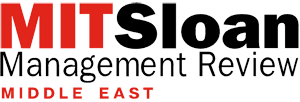How US Foreign Aid Policies Affect Global Business Operations
Transformed U.S. foreign aid policies promise to fracture aid-enabled infrastructure, disrupting business operations in developing markets.
News
- New Study Flags Growing Gap Between AI Plans and Data Readiness
- Anthropic Reports First Large-Scale Cyberattack Driven Mostly by AI
- Google’s New AI Wants to Do Your Holiday Shopping for You
- Parallel Secures $100 Million to Reimagine the Web for AI Agents
- IBM Adds Nighthawk and Loon to Its Quantum Portfolio
- OpenAI Slips In ChatGPT 5.1 As China Steps Up Open-Source Play

THE SECOND TRUMP ADMINISTRATION’s rapid dismantling of the U.S. Agency for International Development (USAID) and uncertainty regarding the new U.S. foreign aid architecture create a significant shift for U.S. businesses operating in challenging global markets. While these changes provoke profound humanitarian concerns, they also have practical implications for businesses that, to date, may have benefited from the direct and indirect ways that U.S. foreign aid programs supported their ability to compete in developing markets. Leaders affected by these changes must now consider how they can shape collective efforts to facilitate continued U.S. competitiveness in global markets.
U.S. companies seeking to source from and serve both emerging and frontier markets must often navigate business environments characterized by fragmented systems, limited data, inconsistent regulatory support, unclear networks of actors, and other unknowns that vary across countries. While some challenges can be addressed internally, many companies have relied on collective investments in market infrastructure, services, information systems, and institutional capacity that have been supported by U.S. foreign aid. Without such collective efforts to lower transaction costs and coordinate activity, many markets remain commercially infeasible because the cost to engage outweighs the potential profits.
U.S. businesses now face the cascading consequences and challenges of their government’s dramatic divestment in foreign aid. Prudent action starts with understanding how foreign aid investment has shaped market conditions and assessing companies’ reliance on those investments.
How Foreign Aid Enabled Business
Foreign aid has shaped the enabling environment for business engagement in emerging and frontier markets since the 1960s. USAID worked with foreign governments to shape policies and build capacity, and with myriad small and medium enterprises (SMEs) in fragmented markets to strengthen skills, capabilities, and coordination. Its pooled investment directly and indirectly supported U.S. businesses and global corporations in ways that were easy to monitor (such as identifying key intermediaries and business partners) and in ways that were not (such as facilitating competitive market conditions). We highlight three such areas as examples.
Knowledge Exchange to Enhance Business Productivity
Foreign aid has shaped the enabling environment for business engagement in emerging and frontier markets since the 1960s.
Business and Social Norms to Stabilize Working Capital
In many developing countries, the entire business ecosystem is negatively affected by the commonly accepted practice of late payment. Late payments can result in high SME churn, which destabilizes markets and undermines profitability. These problems are particularly acute when SMEs do business with the governments of their countries in sectors such as health care and agriculture.
With the Prompt Payment Act of 1982, the United States became one of the world’s leaders in enforcing payment timeliness in federal and state governments and in private businesses. USAID’s payment terms for its implementing partners — who then passed them on to their subcontractors — helped maintain strong payment discipline across the business ecosystem. Many of those contractors, supplying a range of products and services, regarded USAID and its implementing partners as their preferred anchor customers, which in turn fostered overall economic development. Our research indicates that SMEs working with USAID contractors tended to grow faster than their counterparts due to timely payments, knowledge transfer, and improved business practices. Over time, these SMEs began demanding similar payment terms from other clients, influencing broader market standards and shaping an ecosystem more conducive to business. It is not yet clear which entities might step into this void in order to keep payment insurance and working capital requirements low.
Business and Government Relationships to Sustain Growth
Promoting long-term growth in developing countries requires companies and government agencies to understand the complex cultural, governance, and structural differences that shape business relationships in emerging and frontier markets. For example, our research combined the structural study of business systems with longitudinal data to identify opportunities, such as facilitating growth in agricultural markets through credit extension to relevant actors. USAID was an important source of this type of market intelligence that companies can ill afford to lose. Moreover, the agency’s economic incentives and assistance programs provided a model that local governing authorities could emulate in extending market intelligence and amplifying market potential. Together, such efforts facilitated healthy horizontal relationships that had high potential to support various tiers of the supply chain, ranging from raw material supply to last-mile distribution.
In contrast, Chinese foreign investment pours into vertically integrated relationships that benefit only the actors directly involved. In the vertical model, sector insights and growth potential are severely constrained and skewed toward Chinese interests. As a result, the potential for U.S. businesses to understand markets and identify business partners for new ventures is diminished by the absence of direct USAID efforts and the multiplier effect of local authorities.
Understanding Dependency on Foreign Aid
While every company operating in developing countries generally benefits from aid investment in these and other ways, the nature and urgency of adapting current business strategy to uncertain foreign aid depend on how a company benefits from such investments. We propose three high-level categories of these degrees of dependence: companies whose revenue relies directly on foreign aid investment, companies that depend on the infrastructure and ecosystems facilitated by foreign aid investment, and companies that derive value from spillover benefits.
Rely on aid for revenue: These companies contract with foreign aid agencies for goods and services in markets that those agencies serve or for the direct provision of services to such agencies. These include:
- Companies that have been direct contractors of USAID and have provided services to aid agencies (such as Catholic Relief Services, Deloitte, and Tetra Tech).
- Pharmaceutical companies (such as Johnson & Johnson, Merck, and Novartis) that supply medicines and health products to countries in Africa through health programs that were run by USAID but are now run by the State Department.
- Agricultural technology companies (such as Corteva, Monsanto/Bayer, and John Deere) that leveraged USAID activities to support smallholder farmers with resources such as seeds, chemicals, and equipment.
Rely on aid for infrastructure and systems: These companies and organizations depend on foreign aid investment to build infrastructure and/or strengthen the systems in which they operate.
The nature and urgency of adapting current business strategy to uncertain foreign aid depends on how a company benefits from such investments.
Similarly, USAID has helped fund digital payment infrastructure in developing markets, which — beyond facilitating digital payments — has helped companies reduce transactional costs and engage with more market actors. This has particularly benefited service providers’ SME contractors, such as drivers and security guards.
Rely on aid’s spillover benefits: Many foreign aid programs strengthen the technical capabilities and skills of individuals who, over the long term, can act as service suppliers to U.S. businesses. For example, the USAID-funded Diia platform in Ukraine offers citizens digital access to official documents and direct support from over 70 government agencies. According to the country’s Ministry of Digital Transformation, over half of its citizens actively use the platform. More impressively, Ukraine now offers entrepreneurs the fastest business registration in the world. Additionally, insurance and finance companies benefit from identity verification services and reduced risk of financial loss through money laundering or fraud.
Moving Toward Collective Action
While U.S. foreign assistance for key global development areas has not been entirely dismantled and may, in fact, now place greater emphasis on engagement with the commercial sector, some aspects of the aid architecture have changed irreversibly. Leaders of companies operating in developing markets that rely heavily on aid must assess their companies’ exposure to direct and indirect foreign assistance across product lines and business units. They should evaluate how aid-driven investments and institutional capabilities affect their supply chains — and, in turn, their suppliers, customers, and service providers.
This analysis can help companies adapt strategically to an evolving and uncertain aid landscape. Building the networks, institutions, and shared resources that enable businesses, suppliers, and customers to operate and grow more effectively is complex and resource intensive — no single company can solve it alone. Yet, relying on traditional aid programs to fill these gaps is no longer a pragmatic solution. Perhaps a renewed aid architecture that is still evolving will prioritize how aid programs help create the foundational infrastructure and systems that low-income country markets need to function effectively.
Regardless, collective engagement by business leaders is necessary in shaping the course of global competitiveness; collective-action platforms that unite multiple companies around shared goals offer the most viable path forward. U.S. foreign aid in its newer forms, along with other bilateral and multilateral agencies and private philanthropies, should prioritize funding these collective-action platforms.




